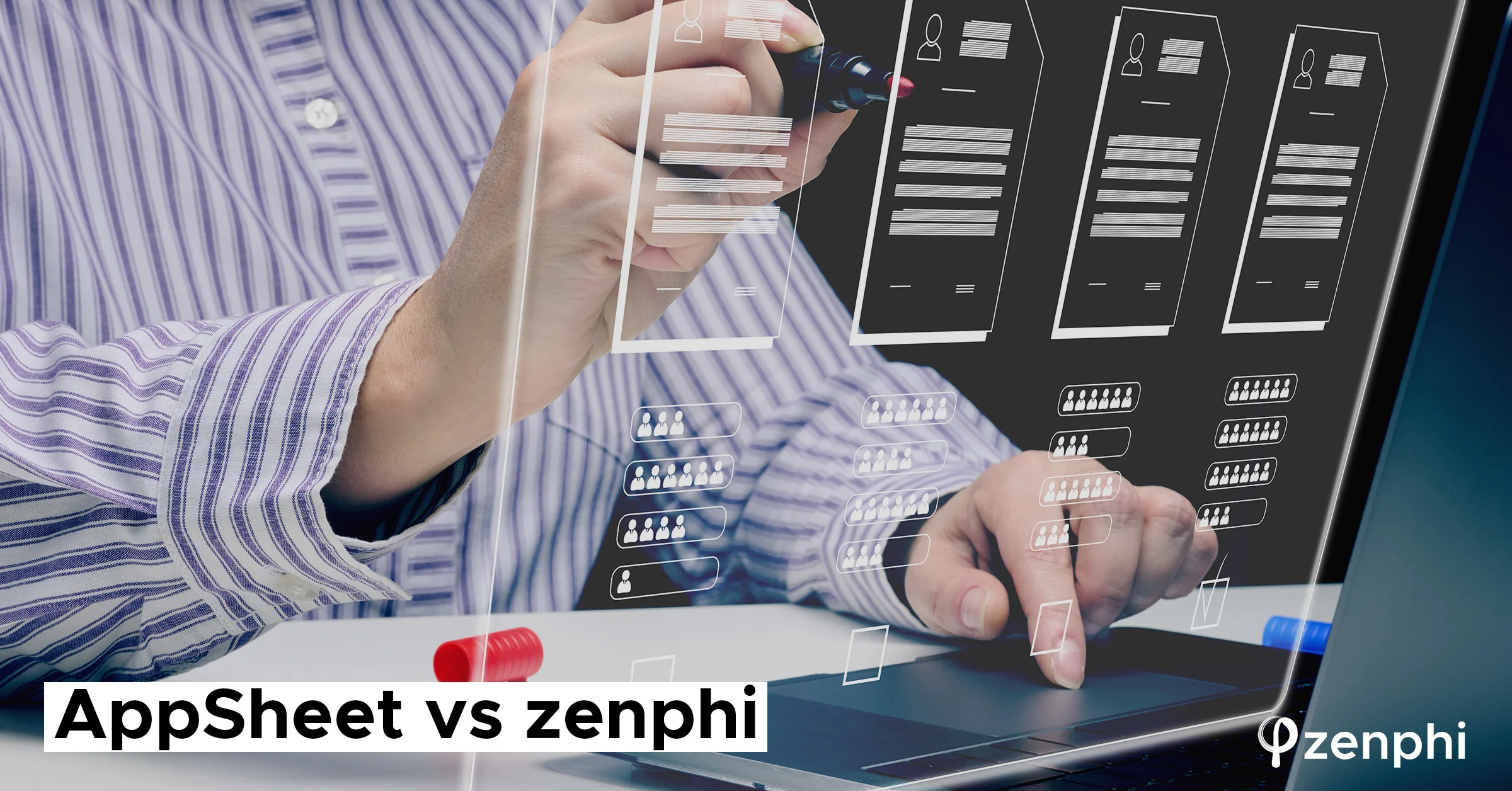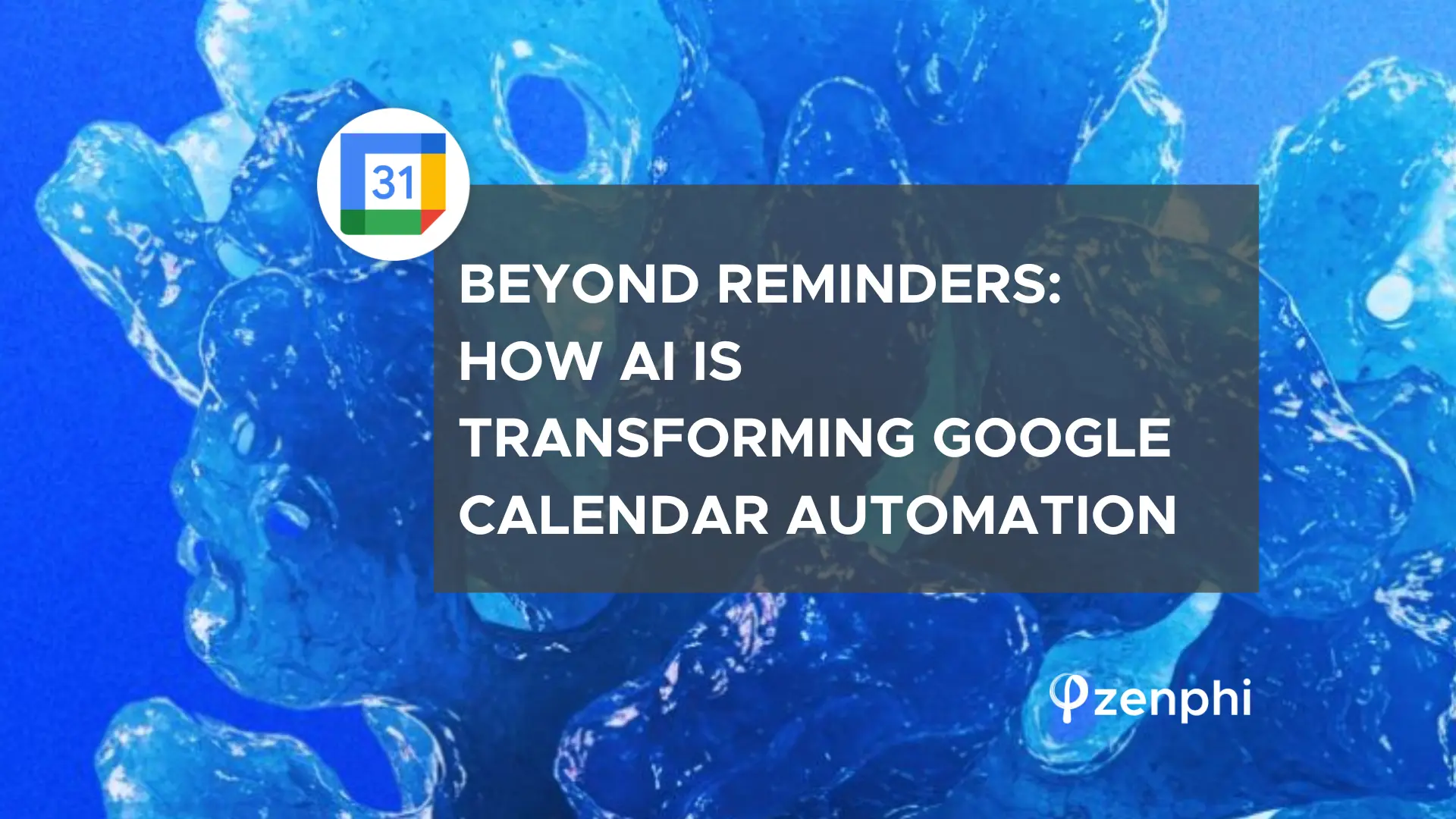AppSheet vs zenphi
AppSheet + zenphi
What are the differences between AppSheet and zenphi? We get this question a lot from our partners and customers, and rightly so. It’s mainly because of the recent marketing activities that Google has been doing around AppSheet.
However, from my view the question is how AppSheet and zenphi complement each other rather than compete with each other.
I’ll explain that in detail, but first let’s see what AppSheet and zenphi are.
AppSheet is a drag and drop application building platform which Google acquired in 2020. It enables you to build apps to collect data and store them in various data sources. AppSheet was born on Microsoft Azure as a generic app building platform (as far as I know, Google is trying to move it to GCP) and after the acquisition, Google has been trying to focus and integrate it’s experience with Google Workspace.
Below is the official description of AppSheet from their website:
AppSheet is a great application building platform, with limited automation and some out of the box connection support for third party applications. It’s app building experience has come a long way since the acquisition and is getting better.
On the other hand zenphi is an easy to use, drag and drop, enterprise-ready, No Code process automation platform which was built from the ground up on Google Cloud Platform for Google users. It enables you to orchestrate and automate simple to complex end to end business processes without writing code. It can integrate with many systems (including AppSheet) to read data from, write data to, or listen to an event in those systems.
zenphi is a genuine no code automation platform. It enables you to visually and easily automate your processes without having to write a single line of code, worry about deployment, scaling, or infrastructure management.
While AppSheet is another great tool to create apps to capture data, zenphi enables you to automate all those invisible steps and logic which needs to happen after data is captured.
In a computer metaphor, while an app building platform, ex. AppSheet, is an input device like keyboard, zenphi is your operating system which orchestrates all those hidden steps which need to happen as par of your solution
Vahid Taslimi Tweet
Building a Solution
Now, let’s take a step back and look at the components we need when we are creating solutions to automate, remove manual steps, improve efficiency, etc.
When creating a solution most of the time we need four components:
- One or more data/event capturing system
- A process/Logic automation system
- One or more systems of records (database, CRM, drive, etc.)
- Analytics/reporting
When creating a solution, data/event capturing is just one part of it. I can almost say there is almost never a time we capture data for the sake of capturing it. We capture data as the initiation event or as part of a process. So, basically you can capture data using an AppSheet app. However, you then need to use a system like zenphi to orchestrate the steps you need to take based on the collected data.
As you can see AppSheet and zenphi complement each other rather than compete with each other. For creating an end to end solution, you probably need both of them working in harmony.
In a computer metaphor, while AppSheet is an input device like keyboard, zenphi is your operating system which
- Accepts data from various input devices (AppSheet being one of them)
- Orchestrate and execute a set of complex logics based on your requirements (ex. calculating tax, branching based on certain conditions, etc.)
- Talk to other input devices/systems (ex. capturing a e-signature as part of your process)
- Read/write/edit data in other systems like databases, Salesforce, Trello, etc.
- And also bring in humans to your processes by assigning them a task and asking them for their input.
At zenphi, we understand that a process can be initiated based on various sources. So, we have taken the approach of being able to start a zenphi process from almost any application/device. (and, we see AppSheet to be just one of them.)
In our view, something happens somewhere in the world and you want to take action based on that event, and that’s where zenphi comes into picture.
That something (event) could be:
- A specific data is submitted through AppSheet, Google Forms, TypeForms, etc.
- A record is updated in Salesforce, HubSpot, Trello, etc.
- An IOT device registering a room temperature falling below a specific value
- A file getting uploaded into a specific folder
- An email arrives in a specific inbox
- An event happening in another in-house system
- A time schedule happens
- Or many other events like the above
With zenphi, you can work with all those systems, devices, applications, etc. raising those events and easily create your logic with a few drag and drops.
In summary, I see AppSheet and zenphi being two different complementing systems rather zenphi functioning as AppSheet alternative. . If you are a Google workspace client looking to accelerate your organization’s speed to market and increase its productivity by empowering all of your employees, then quickly build your data capture App with AppSheet and automate your end to end processes with zenphi.
Finally, I just want to leave you with the below quote from Amit Zavery, Vice President and General Manager, Business Application Platform, Google Cloud, which summarizes the importance of taking the steps and automating your manual processes.
“When business processes rely on manual actions, valuable time is often wasted updating systems instead of focusing on work that drives the enterprise forward. Moreover, opportunities for mistakes or communication lapses are abundant. Line-of-business workers are closest to these challenges, so empowering them to optimize and automate processes is an important area of enterprise innovation “ (source)




